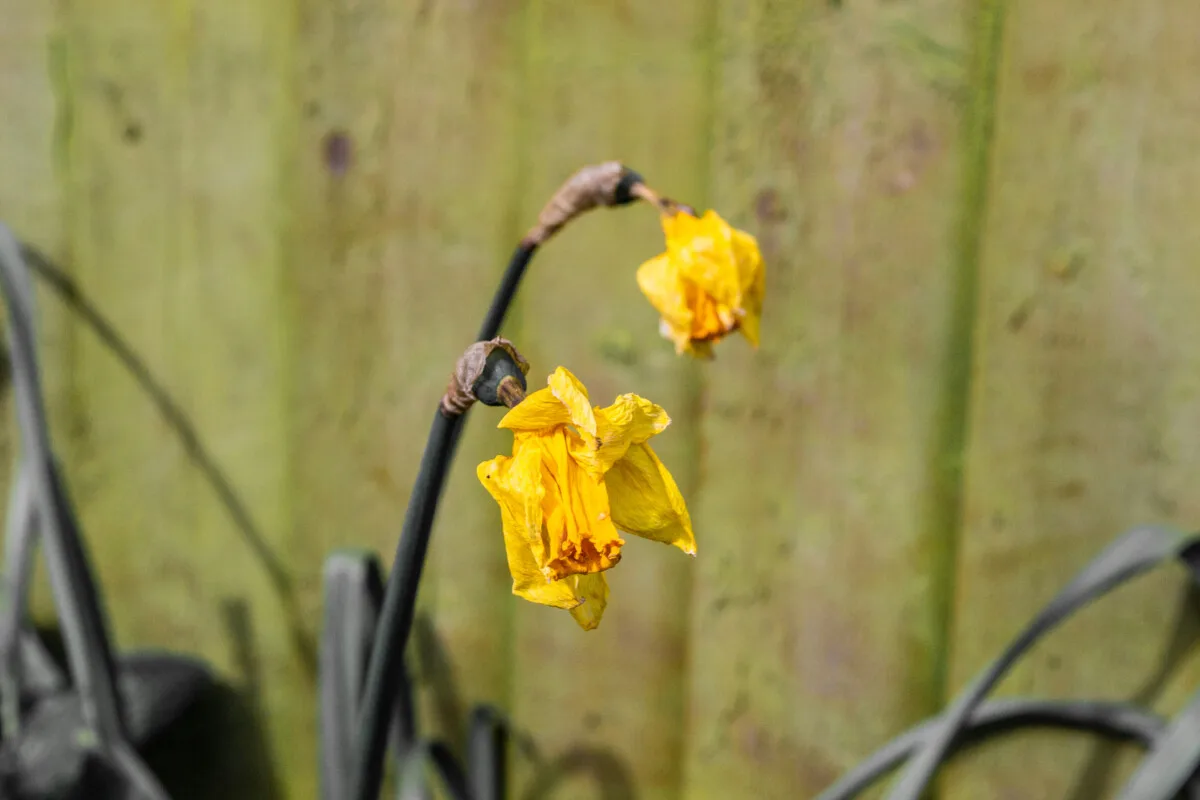
Daffodils are the quintessential bulb, with instantly recognizable flowers that delight throughout spring. The blooms are even more satisfying when growing them on your own, rather than enjoying them purely as cut flowers.
Once you’ve enjoyed the blooms in your garden or in a container, how can you ensure they come back better than ever the following season? Luckily, the process is simple.
About Daffodils
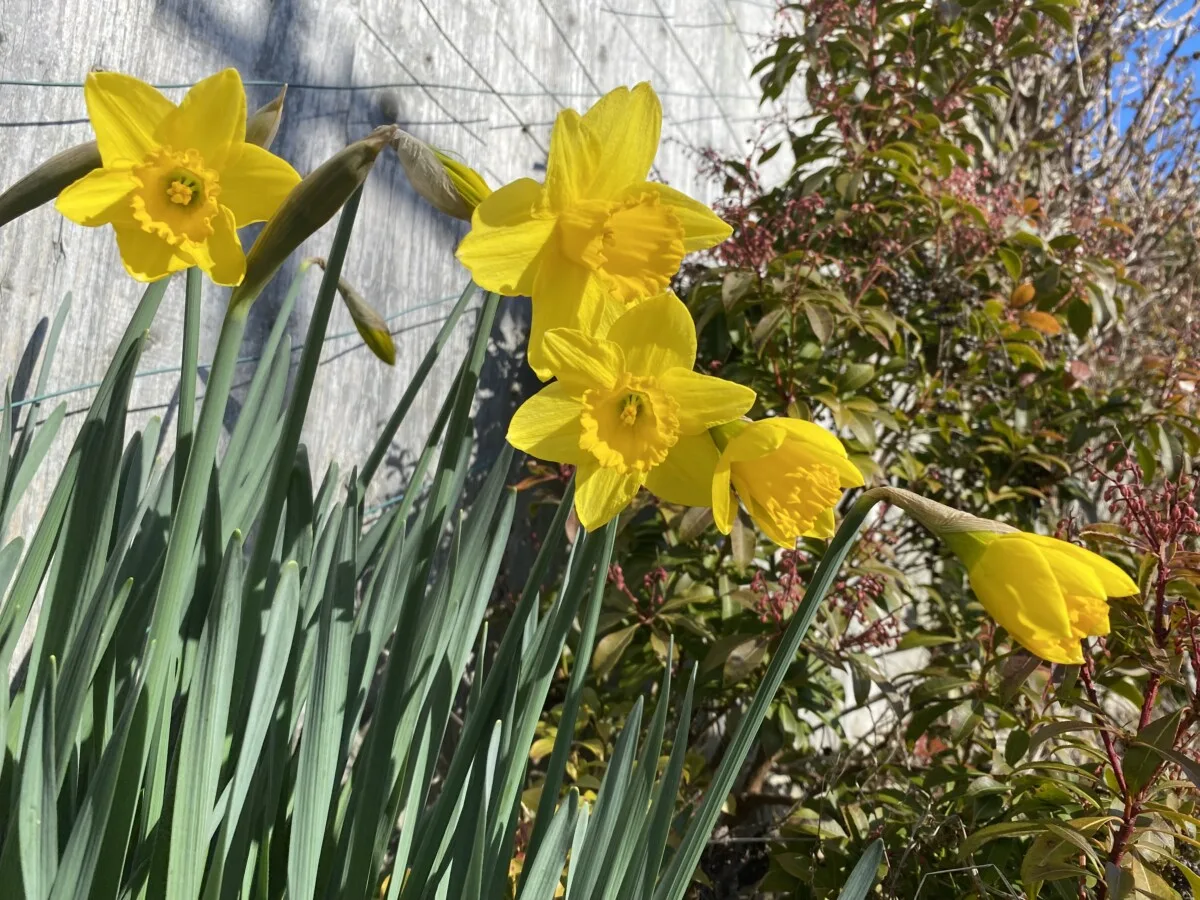
The pretty faces of bright yellow daffodils are a sure sign that spring is in the air. These plants are versatile in the garden, perfect for containers and even growing indoors.
Easy, reliable and not too fussy about soil type, daffodils – or as they are botanically called Narcissus – are also able to grow in full sun and dappled shade, making them one of the most flexible bulbs to grow for a great spring showing of color.
Although the first color of a daffodil that comes to mind is always yellow, there are some other lovely colors in white, cream, orange and sometimes pink. From doubles to miniatures and giants, there is a range for every occasion.
Daffodil Flowering Season
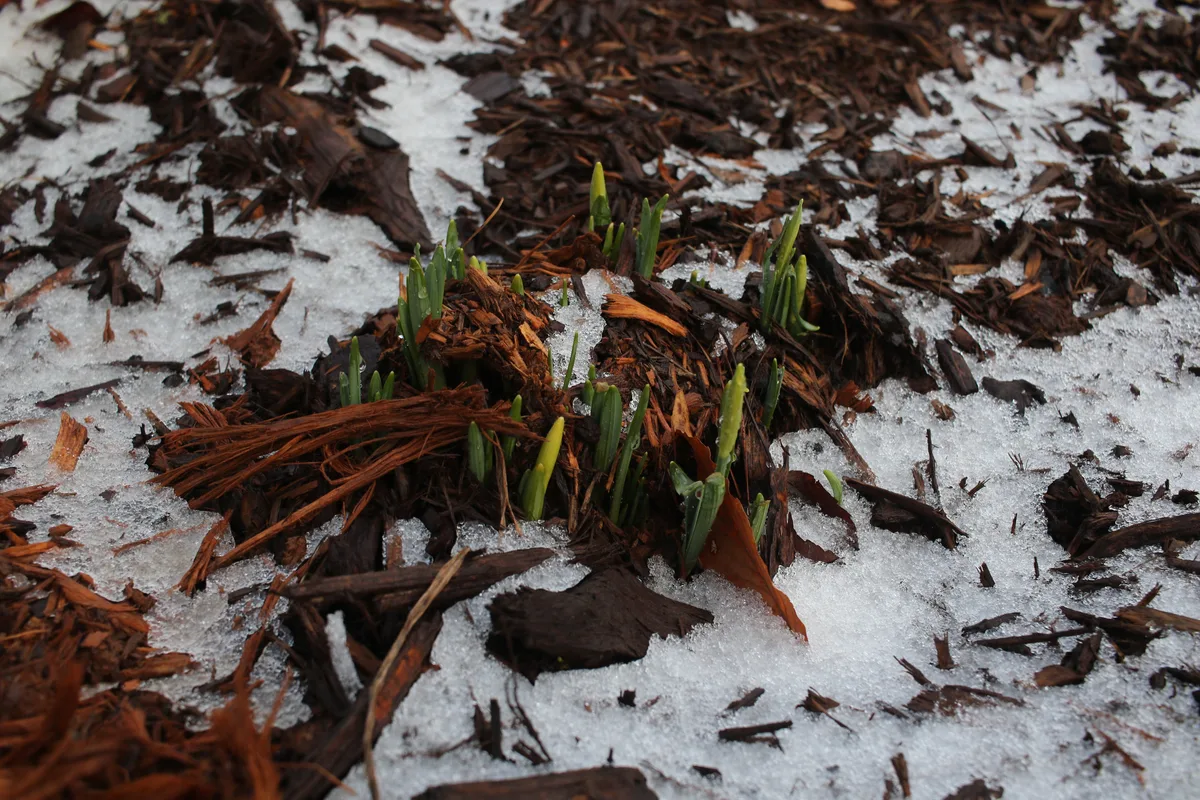
Daffodils grow best in USDA Zones 3 – 8, but can be grown in warmer areas if you pre-chill the bulbs and plant them later in the season.
Daffodils are best planted in autumn when the roots will develop. They will be dormant over winter to start sprouting in February or in some areas, as late as April.
Known as the March birth flower, they will start blooming in late winter and early spring, flowering for around six weeks.
What To Do At The End Of The Season
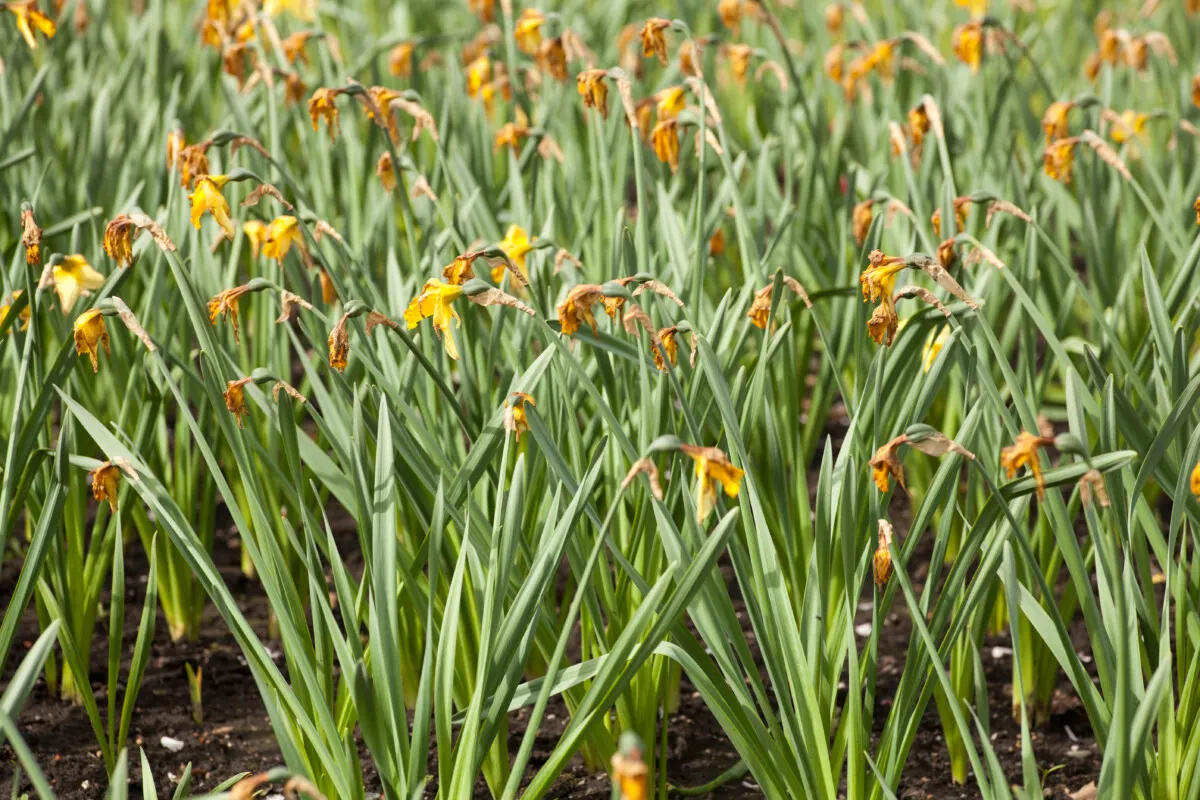
So you’ve spent the last few weeks enjoying your daffodil flowers and now they’ve died back. What next?
Once the flowers have finished blooming, they can be snipped off to keep the plants neat, but the leaves must be kept on the plant. They play an important role by moving nutrients into the bulbs underground to store food for the following season.
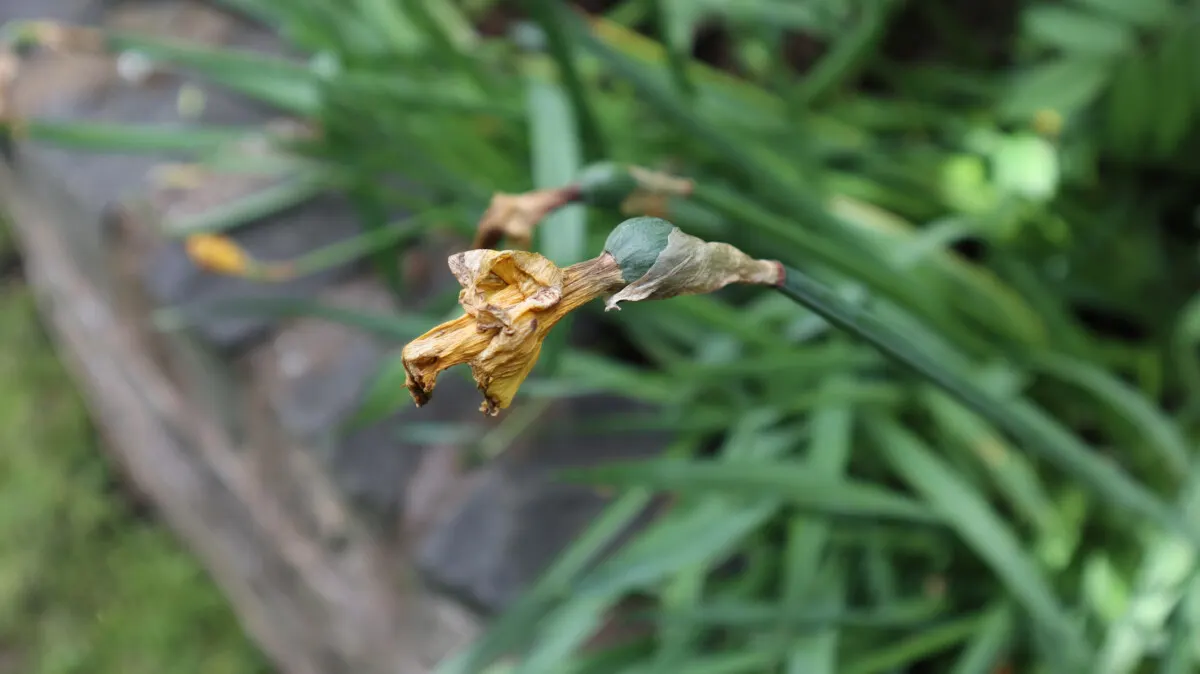
A bulb’s capacity to last an entire season is determined by how much food can be stored in the bulb. The leaves must be allowed to die back naturally to retain as many nutrients as possible.
Once you’ve reached this stage, you have two options – leave them in the ground, or pull them up and store them.
Leave Them In The Ground
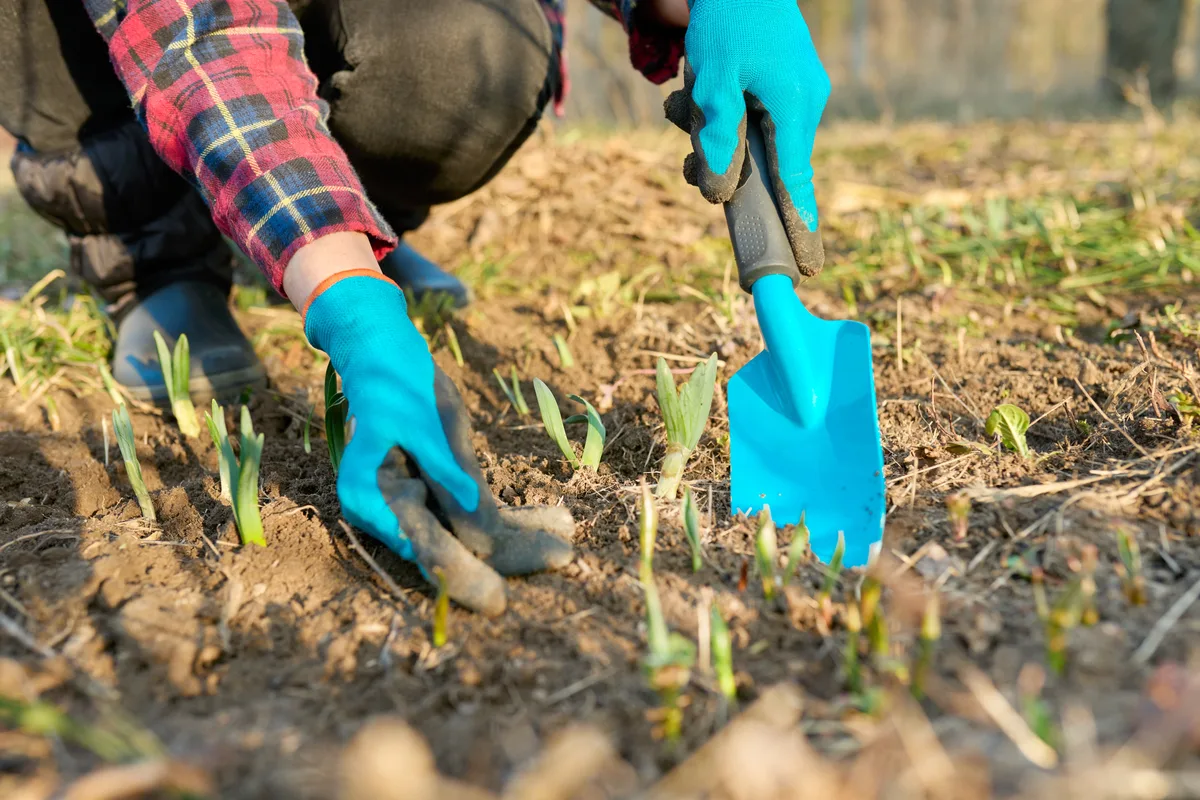
In ideal conditions with dry, cool summers, daffodils do well if left in the ground. Over time, the bulbs will multiply and form clumps which will be a great show the following year.
Once the leaves have yellowed, become limp, and died down completely, they can be trimmed back to the soil level to keep your beds tidy.
Every few years, the clumps may become overcrowded, requiring division to improve their flowering capabilities. This should be done just after flowering while the foliage is still green and within a month of the leaves dying back completely.
Carefully dig up the bulbs with a fork, discard any damaged or diseased bulbs, and replant them in the same area with better spacing. They can then settle in with the others to be ready for sprouting come next spring.
After around 3-5 years, it may be necessary to move your daffodils to a new position with newly enriched soil to improve flowering.
Lift and Store
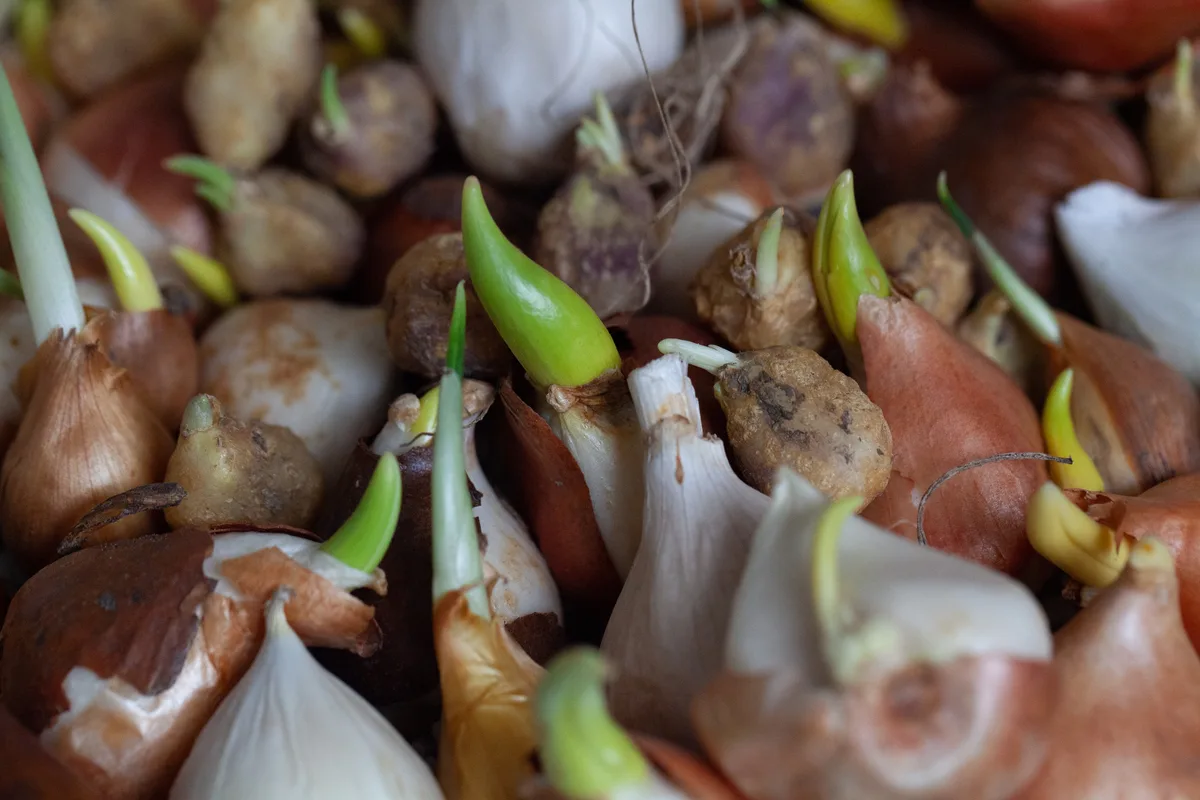
You can also choose to lift and store daffodils to replant the next fall. This is best for those with incorrect conditions – for example, if your zone is too warm to keep them in the ground over summer. Or if you’d like to plant something else in the bed for late spring or summer color but don’t want to damage your bulbs when you dig over the soil.
Once the daffodils have bloomed and the leaves have wilted for about 6 weeks (late May or June), you can dig them up. Use a garden fork and carefully lift them out of the ground. Shake off any excess soil, discard any diseased or damaged bulbs and pack the rest onto trays or cardboard lined with newspaper to cure them for a few days.
Once they are dried, they can be trimmed, labeled, and stored in paper bags in a cool dry place until you are ready to plant them the next season. Make sure there is good air circulation and that the temperatures remain cool.
A couple of weeks before you are ready to plant, pop them into the refrigerator to chill and encourage blooming.
Get Ready For Planting
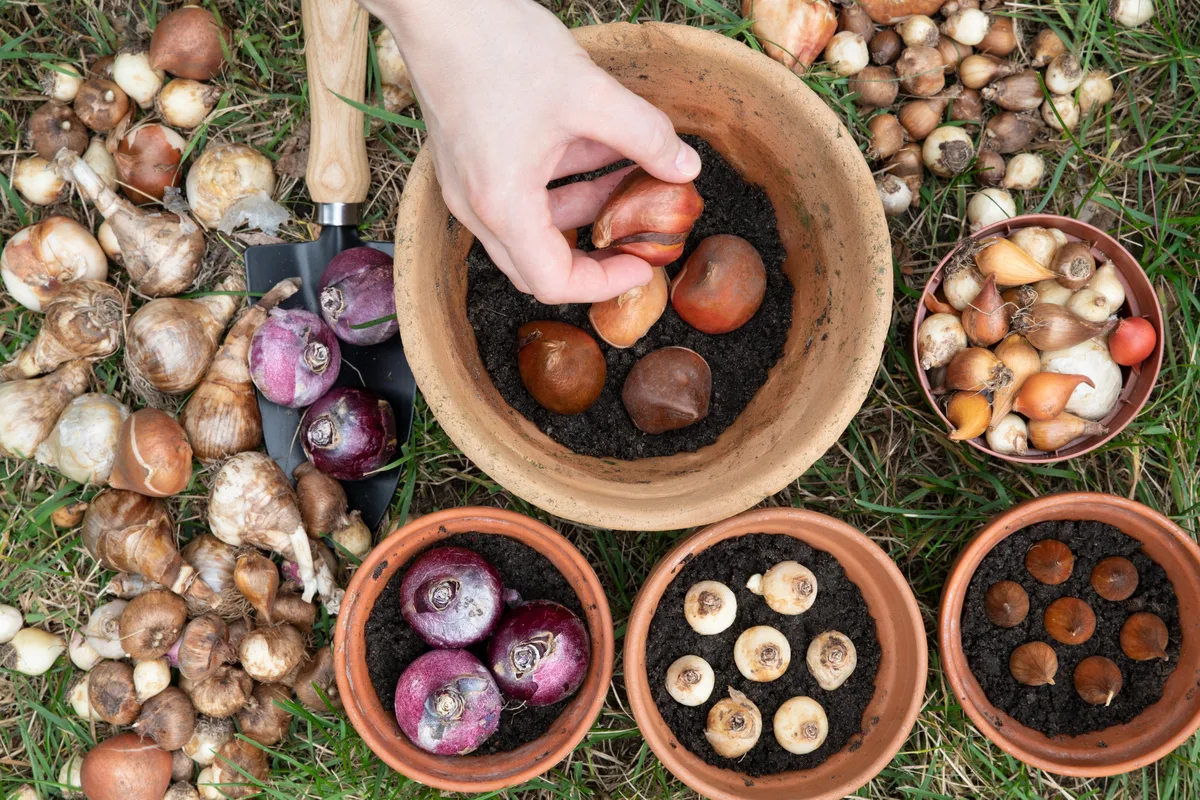
Daffodils are not fussy about soil type, but they will grow better in fertile soil with plenty of organic matter added. Good drainage is essential as they like moisture while growing but hate to be waterlogged.
Avoid adding any fertilizer when planting as this could burn the roots forming from the base. Instead, apply bulb fertilizer on top of the soil when they start sprouting.
Although they can grow in dappled shade, they will flower best when planted in full sun.
